Storing Data in the Cloud: How Safe is It?
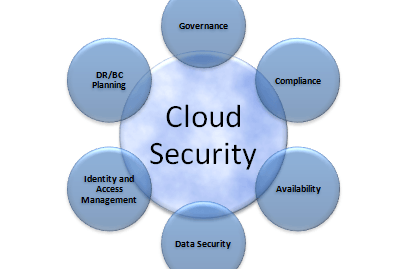
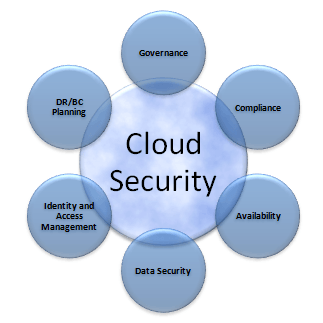
Businesses large and small are turning to cloud computing systems to forge leaner, more effective and efficient organizations. Amid explosive growth in the use of Internet-connected devices, deployments of the latest in mobile broadband infrastructure and the fast emerging “Internet of Things,” (IoT) cloud computing is becoming the core of a new generation of information systems (IS) architecture.
Besides opening up a world of “Big Data” and “Always-On connectivity,” the exponential increase in the number of “things” with IP addresses opens up vast opportunities for those looking to exploit security weaknesses in connected devices, networks and servers. That includes alleged government cyber espionage campaigns as well as an ever-growing variety of increasingly sophisticated cyber attacks on the part of cyber criminals and terrorists.
As the OpenSSL Heartbleed vulnerability and Dragonfly malware group have demonstrated, these malware and cyber threats now have the capability to exploit vulnerabilities in encryption methods and technology, and access network, server and application software to control industrial processes. They can even control critical public infrastructure, such as power, energy and water distribution systems.
Recent malware invasions and security breaches notwithstanding, the cloud computing migration appears unstoppable. According to RightScale's “2014 State of the Cloud Survey,” public cloud adoption among 1,068 organizations surveyed is nearing 90 percent. That begs the question: Are the organizations contemplating a shift to cloud IS architectures concerned about security risk? More fundamentally: Just how secure is cloud data storage?
The growing cloud
Global shipments of smart connected devices, including everything from PCs to wearable electronics and household appliances, surpassed 1 billion in 2013 and are expected to approach 1.8 billion this year, according to a forecast from IDC.
As these devices become a part of every day life, they span the divide between work and home, creating problems for corporate IT security departments. The BYOD, “Bring Your Own Device” and BYOA, “Bring Your Own Application” trends put further pressure on IT security departments and spur another step-change in the evolution and growing use of cloud computing services.
From data storage and Software-as-a-Service (SaaS), the diversity of cloud computing services has expanded to include broader IT outsourcing options – so-called platform-as-a-service (PaaS) and infrastructure-as-a-service (IaaS).
According to RightScale's 2014 cloud technology survey, cloud computing is approaching ubiquity, with uptake fastest among enterprise-scale organizations:
- 94 percent of organizations surveyed are running applications or experimenting with infrastructure-as-a-service;
- 87 percent of organizations are using public cloud;
- 74 percent of enterprises have a hybrid cloud strategy and more than half of those are already using both public and private cloud.
Then there are consumers, who are increasingly making use of cloud services, such as Amazon Cloud Drive, Apple iCloud, Google Drive and Microsoft's SkyDrive, as well as a growing host of niche cloud services providers, such as Dropbox, SugarSync and Box, to store and access digital content from mobile, desktop, small office and home consumer electronic (CE) devices and systems.
Securing the cloud
Securing all of those electronic devices, networks, proprietary data and information from incursions by cyber spies and criminals is of paramount concern to organizations of all stripes, and it is straining the capacity of the IT resources of even the largest and most experienced. That's particularly true when it comes to those new to cloud computing or in the early stages of contemplating cloud deployment.
Besides individual end-users, organizations and cloud computing services vendors, the onus of assuring the security of the cloud falls squarely on the shoulders of IT security software and systems vendors such as Symantec.
Highlighting the seriousness of cloud security threats, Symantec recently reported on an ongoing, sophisticated, very possibly state-sponsored “cyber espionage campaign dubbed Dragonfly (aka Energetic Bear)” that managed to infiltrate information systems of “energy grid operators, major electricity generation firms, petroleum pipeline operators and energy industry industrial control system (ICS) equipment manufacturers” around the world.
Data security and protection, as well as assuring personal privacy, is inherently an issue of corporate social responsibility (CSR). As Cecily Joseph, Symantec vice president of Corporate Responsibility, told 3p: “At Symantec, we enable people and businesses to enjoy the connected world by protecting their most important assets – their memories and data.
“Symantec considers the protection of information – whether it’s in the cloud, on your mobile or desktop – central to the responsibility of corporations in this digital age. Our customers trust us with the data they capture, share and save online. Trust is at the heart of the relationships we cultivate, and the responsibility we have to our customers, partners and communities.”
One of the ways Symantec aims to assuage enterprises' cloud security concerns is a platform dubbed O3 “that provides single sign-on and enforces access control policies across web applications.” As the company explains, “O3 helps enterprises migrate to Software as a Service (SaaS) applications while ensuring that proper risk management and compliance measures are in place to protect enterprise data and follow regulations.”
More broadly, the Open Data Center Alliance (ODCA), surveying the likes of Deutsche Telekom, Disney and SAP regarding enterprise cloud computing and services, found that 66 percent of organizations are concerned about cloud security. Its market research with leading enterprises also lead ODCA to produce a suite of new enterprise white papers on cloud computing requirements and best practices, including “the first available enterprise IT perspective on security and privacy.”
Public, private and hybrid clouds
Proponents contend that making use of public cloud services and data storage solutions from leading providers enhances data and IS security. They point out that leading enterprise cloud computing and data storage service providers such as Amazon Web Services, Google, Microsoft, OpenStack and IT virtualization specialist VMWare employ the best and brightest IT security experts and devote significant portions of their huge budgets to ensuring they are using the latest threat monitoring and cloud security solutions available.
Others beg to disagree. As cloud security start-up JumpCloud co-founder Rajat Bhargava said in a recent interview:
"There's no more debate. When you don't own the network, it's open to the rest of the world, and you don't control the layers of the stack, the cloud - by definition - is more insecure than storing data on premises."
The cloud and the Internet of Things
Adding impetus to the cloud computing migration is the desire to latch on to, and capitalize on, the fast emerging “Internet of Things” (IoT). Surveying 400 IT professionals in the U.S. and U.K. on behalf network control systems developer Infoblox, Coleman Parks Research Ltd. found that 90 percent of respondents’ enterprises are either planning or already implementing network solutions to manage the huge increase in traffic the IoT is anticipated to bring.
According to Gartner, the installed base of “things” connected to the Internet will grow nearly 30-fold, to 26 billion units, in 2020 from 0.9 billion in 2009. “Things” in this context excludes PCs, tablets and smartphones.
“Network administrators have struggled in recent years to stay on top of the ‘bring your own device’ (BYOD) trend, and the IoT will create an increase in end points that is an order of magnitude greater,” said Cricket Liu, chief infrastructure officer at Infoblox, a provider of network control software and systems.
“At the same time, many networks teams will have to respond to the IoT without significant increases in budgets or head count. Network automation will become crucial as IT departments confront this massive growth in network complexity.”
Are cloud security threats overblown?
New security threats are anticipated as IoT deployments expand. Nearly two-thirds (63 percent) of respondents to the Coleman Parks market research report believe IoT to be a threat to network security. On the other hand, 37 percent believe such concerns are overblown and amount to hype.
Cloud services are still at a stage where they are evolving rapidly, as are cyber threats. That compounds the challenge and raises the risks associated with the quest to realize new revenue streams and gains in productivity, as well as the greater flexibility and lower IT costs, cloud adoption promises.
Seen as the best means of supplementing IS security methods and tools such as multi-factor authentication (MFA), wholesale data encryption is being touted as the best means of assuring the security of data, networks and overall IS, whether it be data stored on public, private or hybrid cloud systems.
Yet, as Heartbleed and Dragonfly demonstrate, even public key infrastructure (PKI) and SSL (Secure Sockets Layer) – the core method and means of data encryption – as well as virtual private networks (VPNs), are vulnerable and under attack. Gartner forecasts that there will be a dramatic rise in the use of SSL in cyber attacks in coming years, with over half of all network attacks making use of encryption by 2017.
As occurred with previous waves of IT innovation, such as outsourcing of data processing, storage, applications and customer services to third-party providers, IT industry experts contend that greater familiarity with cloud computing and services will assuage end-users' concerns. Results from RightScale's 2014 cloud survey bear this out. “While the benefits of the cloud increase with experience, the challenges of cloud show a sharp decrease as organizations gain expertise with cloud,” RightScale concludes.
“Security remains the most-often cited challenge among Cloud Beginners (31 percent) but decreases to the fifth most cited (13 percent) among Cloud Focused organizations. As organizations become more experienced in cloud security options and best practices, the less of a concern cloud security becomes. Concerns about cloud security declined in 2014 among both Cloud Beginners and Cloud Focused respondents.”
*Images credit: 1) Powered Backups
Manufacturers Back Bill to Limit Liability for Energy Star Ratings


If U.S. appliance manufacturers have their way, consumers who purchase washers, dryers and other appliances based on their Energy Star ratings won’t be able to sue their makers if the energy savings aren’t as good as promised.
A House bill sponsored by Robert Latta (R-Ohio) and co-sponsored by Peter Welch (D-Vt.) would remove consumers’ ability to launch class-action litigation against a manufacturer if actual energy savings did not reflect what the Energy Star rating stated at the time of sale.
The bill, which was submitted for review July 12, has the backing of several large appliance makers, including Whirlpool and LG, which are members of Alliance to Save Energy (ASE). Welch was an honorary co-chair of ASE at the time of the bill’s submission. He now serves as honorary vice-chair.
The Energy Star program is a government-backed system that rates products according to their energy efficiency. Consumers can not only save energy by using many of these products, but often receive state or federal tax rebates for using them. The increased sales from the program incentivize manufacturers to build “energy smart” products. (One of the roles of ASE is to promote the values of the Energy Star program.)
But in 2010, the Government Accounting Office conducted an investigation and found that not all Energy Star-rated products may be what they seem. The GAO applied for Energy Star certification for 15 “bogus” products, including a fossil-fuel-powered alarm clock that was “the size of a small generator and powered by gasoline,” and found that responses to the applications were inconsistent, at best. Another fabricated product was described as a geothermal heat pump whose “energy use data reported was more efficient than any product listed as certified on the Energy Star website at the time of submission.” The Energy Star program never questioned the data, and approved the application. Of the 15 applications the GAO submitted, two applications were rejected, and another three received no response. Other bogus products received purchase offers by manufacturers because of their Energy Star “ratings,” which were inaccurate.
“This clearly shows how heavily American consumers rely on the Energy Star brand,” the GAO report stated. “The program is promoted through tax credits and appliance rebates, and federal agencies are required to purchase certain Energy Star-certified products.’
The GAO researchers stated that they felt the problems stemmed from the fact that the program did not require third-party verification of energy savings data. As a result, Congress made changes to the program, requiring third-party verification and periodic product checks.
But consumers and advocacy organizations have also reported problems: In February 2010, Consumer Reports found that an Energy Star-rated Kenmore refrigerator (made by LG) registered reasonable energy consumption – so long as the ice maker was not connected. When it was hooked up, said CR, the energy usage for the refrigerator was double what the rating said.
With the publication of the GAO’s report and discoveries by consumers and CR that the Energy Star ratings weren’t matching the actual energy consumption, class-action suits began spiking. Customers who felt they had been deceived by the manufacturers’ statements joined together to fight back in the form of class-action suits.
Companies that have been hit hard by litigation, however, feel that manufacturers shouldn’t be held liable for ratings that they say are really estimates of what the product can save.
The “EPA already has sufficient authority to protect consumers and make the determination of whether compensation is appropriate,” the Home Appliance Association told the New York Times.
The ASE website refers to Latta and Welch’s House Bill 4586 as “a modest fix to Energy Star that would help appliance manufacturers avoid unfounded litigation that would deter efficiency R&D and participation in Energy Star.” It does not explain why 67 percent of the bogus energy-efficient products that were submitted by the GAO passed the Energy Star’s review process. Rather, it suggests that products that are “occasionally” found to be “in violation” of the Energy Star program and later “disqualified” have left manufacturers open to litigation after consumers assert that they have been misled by the product’s stated efficiency rating.
“[Because] of a gap in federal law,” ASE states, "manufacturers of Energy Star appliances are now being targeted when an appliance is disqualified,” and suggests that the litigation, enforcement measures and compensation are a form of “double jeopardy” that result in millions of dollars of fees to the manufacturer “while adding no value to the consumer.”
As we have reported previously, class-action litigation does indeed have its pitfalls. It most often results in no monetary compensation for secondary litigants other than the nominal reimbursement of some of the cost that has been expended in the purchase (and almost always lacks compensation for travel, research and other costs that may have been associated with getting their money back). So ASE has a point when it mentions that there is a questionable financial gain to the consumer.
But as one trial lawyer pointed out, that’s often not the point of class-action litigation.
“By eliminating consumers’ access to the civil justice system, corporations will not be held accountable in court for swindling customers,” Sarah Jones from the Association for Justice told the New York Times.
U.S. class-action litigation is designed specifically for the purpose of ensuring that beyond the financial reimbursement of their costs, consumers – and the U.S. justice system – have a way of ensuring companies are held accountable for their actions, not just the cost the consumer incurred.
And that is what may seem so unpalatable to manufacturers who are finding that sometimes it’s harder to meet consumers’ expectations for energy savings than they are willing to candidly admit. According to Govtrack.com, however, the bill has about a 3 percent chance of passing.
Image courtesy of LG
$10 Million for Native American Climate Resilience
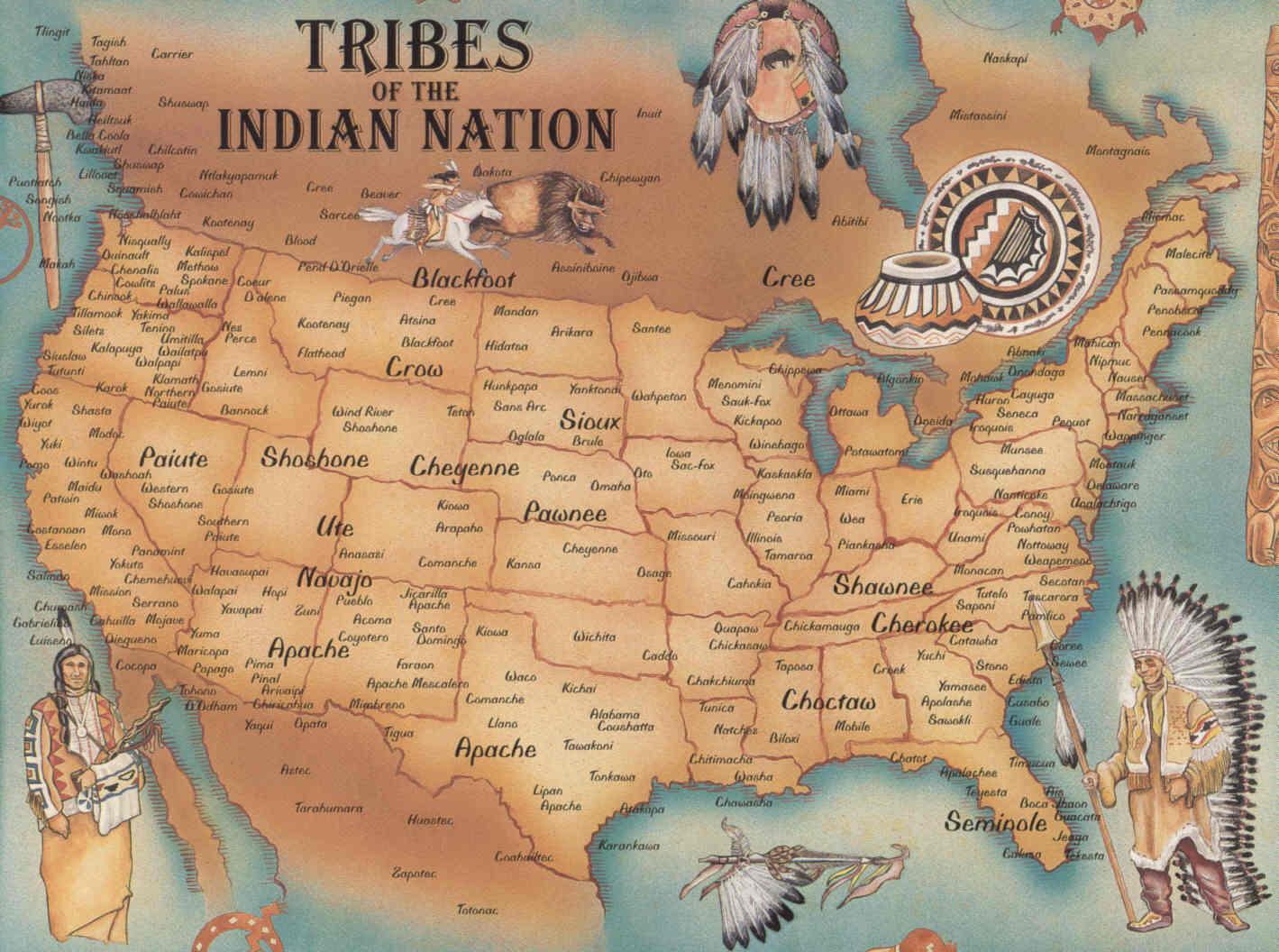

The president himself took the lead role in forging ahead and taking action to avert the worst effects of climate change last week, presiding over the fourth and final meeting of the 26-member White House State, Local, and Tribal Leaders Task Force on Climate Preparedness and Resilience.
The president on July 16 announced a series of new climate change resilience initiatives, including making new investments to fortify community electric grids, build stronger man-made and natural coastal storm defenses, and protect water supplies, as well as enhance climate change and infrastructure data gathering, analysis and planning via 3-D GIS mapping initiatives.
Following up on the president's announcement, Interior Secretary Sally Jewell and Assistant Secretary of Indian Affairs Kevin Washburn announced the administration is dedicating nearly $10 million to help American Indian tribes enhance their resilience to climate change through adaptation and mitigation initiatives.
The Tribal Climate Resilience Program should be a win-win-win situation, benefiting American Indian tribes and the nation economically, socially and environmentally.
Enhancing climate resilience in Native American communities
The Tribal Climate Resilience Program will provide federal funding for tribes, tribal consortia and organizations to develop science-based information and tools for adaptive resource management, as well as craft climate resilience strategies.
Supporting such efforts, the program also entails carrying out nationwide climate adaptation planning sessions and providing funding for tribal engagement and outreach with other groups regionally and nationally.
Speaking to the threat and costs of rapid climate change, Secretary Jewell said:
“From the Everglades to the Great Lakes to Alaska and everywhere in between, climate change is a leading threat to natural and cultural resources across America, and tribal communities are often the hardest hit by severe weather events such as droughts, floods and wildfires. Building on the President’s commitment to tribal leaders, the partnership announced today will help tribal nations prepare for and adapt to the impacts of climate change on their land and natural resources.”
To further assist tribes create and carry out climate mitigation and adaptation plans, the Department of the Interior and Environmental Protection Agency (EPA) will join in creating a sub-group within the White House Council on Native American Affairs that will share data and information, as well as coordinate administration efforts with tribal leaders and groups.
Native Americans, climate mitigation and adaptation
Native Americans, with support from the federal government, are increasingly turning to renewable energy and energy efficiency in a bid to realize the untapped human, as well as wind, solar, biomass and geothermal, energy and resource potential that resides on Native American tribal lands.
In addition to providing much-needed access to clean, reliable and cost-effective sources of water and electricity, kick-starting development of renewable energy and energy efficiency projects on Native American tribal lands can provide a boost in terms of creating jobs and economic opportunity.
Furthermore, they are in tune with traditional Native American values, beliefs and attitudes towards nature and the physical environment, as they are with the broader, modern day societal trends that underpin calls for greater corporate sustainability, social responsibility and environmental justice.
“Our language, our song, our cultural traditions are based on the Sun, the winds, the Earth and its waters,” Henry Red Cloud, a pioneering Native American renewable energy advocate and founder of Lakota Solar Enterprises and the Red Cloud Renewable Energy Center, said in a 2013 interview with 3p.
Commenting on the president's Tribal Climate Resilience Program, EPA Administrator Gina McCarthy stated:
“Tribes are at the forefront of many climate issues, so we are excited to work in a more cross-cutting way to help address tribal climate needs. We’ve heard from tribal leaders loud and clear: when the federal family combines its efforts, we get better results - and nowhere are these results needed more than in the fight against climate change.”
*Image credits: 1) WhiteHouse.gov; 2) Emerson Kent.com
Houston’s One-Bin Recycling Program: Path to Zero Waste or Environmental Racism?


When you think of zero waste, you might picture towering compost heaps or overflowing recycling carts – but what about one bin for all of your household waste, from carrot peels and chicken bones to junk mail and soda bottles? That’s the idea behind Houston’s “One Bin for All” program, which aims to boost the city’s dismal recycling rate of 19 percent, which falls 15 percent below the average national recycling figure.
Public officials predict the initiative will help the city keep 75 percent of its trash from the landfill, but critics of the program, ranging from the Texas Campaign for the Environment to the NAACP, contend that it will actually prevent the city from achieving zero waste and smacks of environmental racism.
Billed as the “next evolution of recycling,” Houston’s “One Bin for All” campaign is not to be confused with the single-stream recycling programs popular in many American cities. Single-stream recycling allows customers to place all of their recyclables in one cart and garbage in a second cart (there is sometimes a third cart for green waste). The one-bin program, on the other hand, is exactly as its name suggests: All of a household’s or business’ trash, recyclables and compostables are tossed into one bin, with no sorting required.
After collection, the waste will be hauled to a yet-to-be-constructed local materials recovery facility, specially designed to sort recyclable and compostable materials from garbage. Paper, plastics and other recyclables will be reprocessed; the facility will convert non-recyclables to either compost or energy, according to the city.
Of course, the main benefit of Houston’s proposal is customer convenience: It’s easy for residents and businesses to simply throw all of their waste into one bin, and the city won’t have to spend time and money educating customers to separate their waste streams correctly. Furthermore, “One Bin for All” will not only bump up the volume of recyclables and compostables collected, but it will also reduce greenhouse gas emissions – due to fewer materials degrading in the landfill and emitting methane, and fewer garbage truck trips around the city to pick up fewer bins, the city says.
But not everyone is on board with Houston’s bright idea to reduce its waste. Environmental groups like the Texas Campaign for the Environment and Zero Waste Houston charge that mixing together trash, recyclables and compostables in one bin will result in contaminated recyclables, particularly paper and cardboard, that either can’t be marketed to recyclers or will fetch a much lower price in the marketplace. To be fair, however, this is the same criticism recyclers cast at single-stream recycling when it was first introduced, and recycling processors eventually adjusted to the dirtier, wetter paper and cardboard in the market.
The NAACP and Robert Bullard, founder of the environmental justice movement, are also criticizing the plan’s proposed materials recovery facility – likely to be sited in one of Houston’s African American or Latino neighborhoods – as an environmental justice issue. The facility will convert trash into energy – and not simply separate recyclables from garbage – so social justice advocates are concerned about the emissions generated during this process and how it will affect the community’s health.
With all this controversy surrounding “One Bin for All,” one question keeps coming up: Why didn’t Houston simply roll out a single-stream program citywide? Before 2013, less than half of the city’s households had recycling bins, according to Zero Waste Houston. The city intimates that single-stream recycling isn’t making enough of a dent in the waste stream in Houston or in cities across the nation, since America’s recycling rate has hovered around 30 percent for years.
It is encouraging to see a city try to take an innovative approach to a common environmental problem, but, based on the success – and laudable recycling rates – of cities like San Francisco and Austin, it seems like Houston may be trying to reinvent the wheel.
Image credit: Flickr/Horacio Maria
Passionate about both writing and sustainability, Alexis Petru is freelance journalist based in the San Francisco Bay Area whose work has appeared on Earth911, Huffington Post and Patch.com. Prior to working as a writer, she coordinated environmental programs for Bay Area cities and counties. Connect with Alexis on Twitter at @alexispetru
CSR Asia Highlights Inclusive Business Opportunities in Cocoa
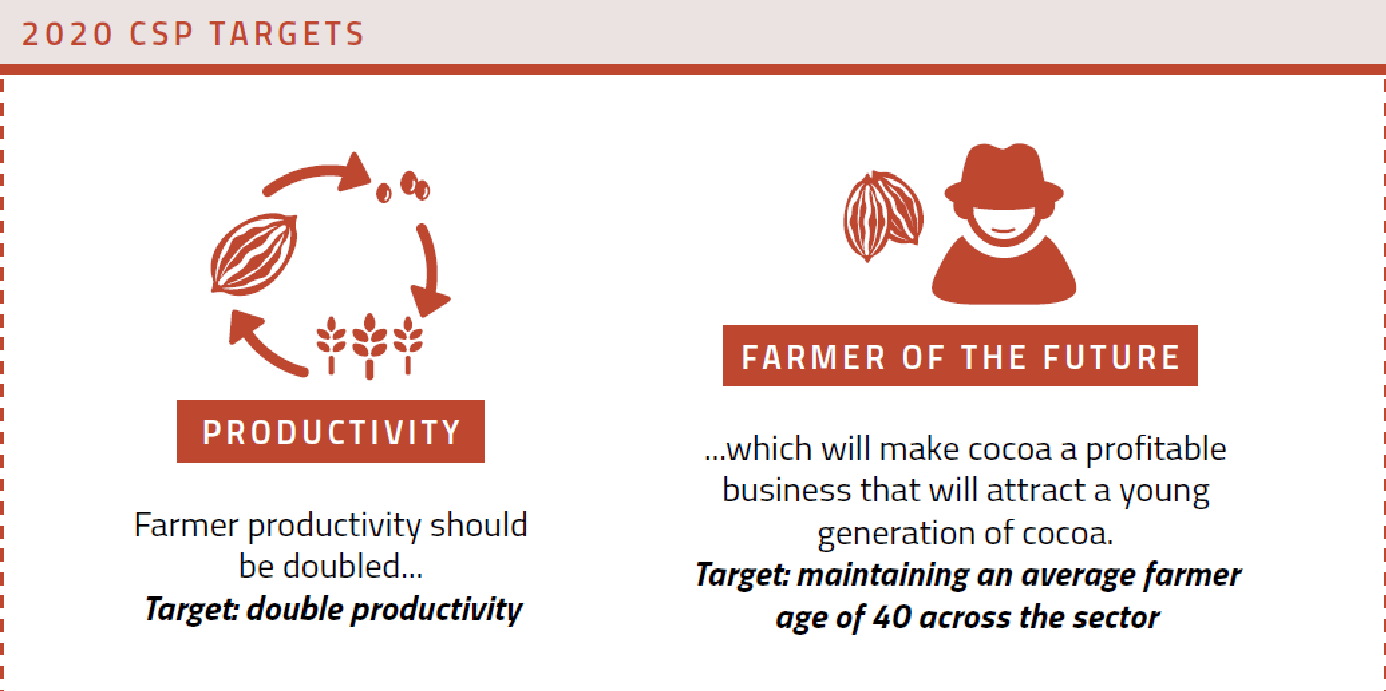

Global demand for cocoa is projected to grow to $98.3 billion in 2016. With demand for chocolate and other cocoa products rising, businesses along the cocoa value chain are challenged by a host of factors, including unfair trade and predatory business practices, social discontent, environmental degradation and climate change.
Growing middle classes in Asia and around the world are contributing to increasing demand for higher-quality cocoa products, yet cocoa cultivation remains labor- and time-intensive. That poses challenges for producers of all sizes. Sustainability standards and inclusive business models place greater value on longer-term social and ecological benefits as opposed to simply maximizing yields and productivity, however.
Focusing on two of Asia's principal cocoa producers – Indonesia and Vietnam – CSR Asia, in collaboration with Oxfam, assessed sustainability across the cocoa industry, asserting that development of more inclusive business approaches would benefit smallholder producers, consumers and participants across the cocoa value chain.
The cocoa market and value chain
West Africa supplies 73 percent of worldwide cocoa supplies, with the Ivory Coast being the largest producer by far. Cocoa farms in Asia and Oceania produce another 14 percent, with Indonesia as the world's second-largest cocoa producer, harvesting an estimated 700,000-plus metric tons of cocoa beans in 2011. Cocoa producers in the Americas account for another 13 percent of global supply, with Brazil producing nearly 250,000 metric tons in 2011.
Cocoa supply is expected to fall short of demand in 2013-2014 “despite robust production in the first quarter of the season,” primarily due to demand for cocoa butter, which has reached a seven-year high, and rising demand in emerging markets, Asian markets in particular, CSR Asia notes in its report.
When it comes to cocoa production, smallholders predominate. Over 90 percent of world cocoa supplies are grown on smallholder farms, CSR Asia highlights in “Inclusive Business in Asia: A Case Study of Cocoa.” An estimated 5.5 million smallholders and 20 million family members are dependent on cocoa for their livelihoods.
As is the case across the spectrum of agricultural commodities, it is the middlemen – the processors and distributors – that garner the biggest slice of revenues and profits from cocoa, however. Multinational commodity trading giants, such as Cargill and Archer Daniels Midland, dominate the industry. Rivaling them, at least in the size of their businesses, are the world's largest chocolate and cocoa products manufacturers.
Cocoa: Key challenges and inclusive business opportunities
An inclusive business approach would benefit all parties. As Erin Lyon, CSR Asia executive director, said in a press release:
“A particular passion is required to grow cocoa – it requires time consuming TLC: Tender, Loving Care. Smallholders can find better returns growing other commodities. Consumers, who have a growing passion for chocolate products, will ultimately pay a greater price if the industry does not shift to an inclusive business model approach.”
CSR Asia summarizes the key challenges facing the cocoa industry as follows:
- Low productivity and quality;
- Diseased and aging trees;
- Questions over sustained investment in sustainability initiatives;
- Complex trade flows and changing taxation climate;
- Poor pricing transparency;
- Inefficient project management and poor governance;
- Inadequate trust;
- Land pressures;
- Aging farmers;
- Gender inequality; and
- Limited multiple livelihood strategies
As a result, the future of cocoa production is uncertain. As the report authors state:
“[I]t is to be determined if current initiatives can shift to the adoption and promotion of inclusive business models, thereby addressing key challenges facing the cocoa value chain, which include: protecting the environment, dealing with the impacts of climate change, ensuring livelihoods that are sustainable for current farmers, promoting gender equality, creating sufficient incentives to encourage future generations into cocoa farming, whilst simultaneously educating consumers about the value of cocoa.”
Gathering accurate data on cocoa production is a significant problem for those looking to better understand the industry and develop inclusive business models and sustainability standards and certifications, CSR Asia points out. U.N. FAOSAT reported Indonesian cocoa production for 2011 at 712,220 metric tons while Reuters reported output of 435,000 metric tons.
Cocoa in Indonesia
Some 1.5 million – 1.6 million hectares (3.7 million to 3.95 million acres) of Indonesian land is under cocoa cultivation, according to the Indonesian Cocoa Association (ASKINDO), with the southeast Asian nation producing 575,000 metric tons in 2013. Nearly 296,000 metric tons were exported, generating foreign exchange revenue of some $794.8 million, down from 388,000 metric tons worth $1.05 billion in 2012.
Excluding workers in the downstream, processing and distribution sectors, it's estimated that over 6 million rural Indonesians rely on cocoa production for their livelihoods.
Indicative of trends across the Asia region, Indonesian cocoa production has plateaued at around 500,000 metric tons per year, and the country has gone from being a net exporter to a net importer of cocoa. Tax incentives for local grinders has contributed to the shift, but so has the declining condition of Indonesia's cocoa trees and water shortages. A long, convoluted supply chain, and poor price dissemination, particularly down to the smallholder producer level, are likewise hindering sustainability efforts.
Such efforts are also hindered by a lack of knowledge and expertise, even on the part of international development programs. As the report authors note, “[P]oor project implementation and the lack of specific crop expertise from trainers have resulted in waste and inefficiency. One stakeholder reported the loss of billions of rupiah spent on the wrong type of cocoa seedlings.”
Sustainability and inclusive business across the cocoa value chain
Cocoa farmers, processors, distributors, governments, international agencies and NGOs are working to develop healthier, more sustainable business and industry models, methods and practices.
Global chocolate and cocoa product manufacturers Mars and Nestle are among the cocoa industry participants taking a multi-stakeholder approach to enhancing sustainability, the report authors highlight.
In Indonesia, the two most widely adopted sustainable cocoa certifications are the Rainforest Alliance and UTZ certifications. The following key criteria are common to both:
- Farm management;
- Product handling;
- Product traceability;
- Human resources;
- Natural resources and biodiversity;
- Certification group management; and
- Social and environmental responsibilities.
Certification alone isn't sufficient to assure establishment of more inclusive business models and sustainable cocoa business propositions for smallholders, however, CSR Asia contends.
For one thing, premiums for sustainably produced cocoa in the global market aren't high enough to reach required production levels. “Margins are thin for cocoa trades and stakeholders argue that cocoa prices on international markets do not reflect the realities of the cost of cocoa production,” the report authors point out.
Consolidation, meanwhile, has left supply largely in the hands of “a handful of dominant traders.” Furthermore, the report authors continue, there's a need for greater transparency at every level in the cocoa value chain.
The next step to assure overall sustainability across the cocoa industry value chain, according to CSR Asia, is to move “beyond a productivity agenda” and towards an inclusive business approach. Elaborating, CSR Asia Chairman Richard Welford said:
“It is clear that the next generation of farmers will not want to grow cocoa unless they can see greater returns for their efforts. Unless we can improve quality, productivity and incomes of farmers through inclusive business interventions, then there may simply be no cocoa being grown in Asia in the future.”
“An inclusive business approach,” CSR Asia continues, “would move towards a model that rewards the smallholder in the value chain as producers – building productivity and product quality to meet market demands whilst at the same time improving and protecting the economic, environmental and social conditions in smallholder communities.”
Image credits: CSR Asia, "Inclusive Business in Asia: A Case Study of Cocoa"
Entrepreneurs Transform Urban Farming with High-Tech Solutions
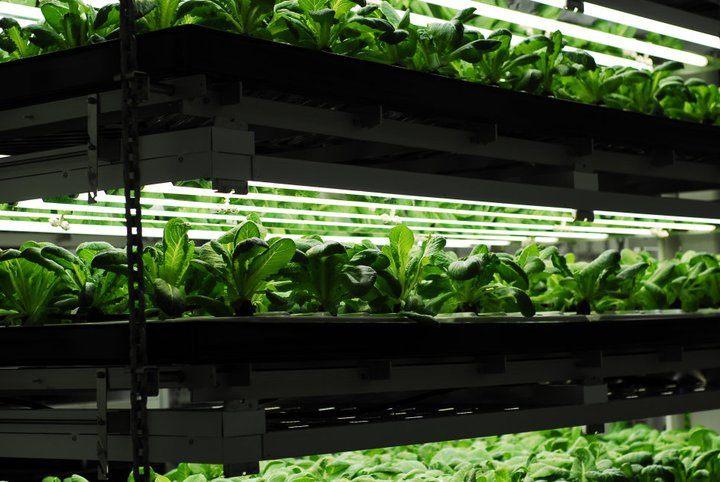

Tech entrepreneurs are trading in their Google Glasses to try their hand at urban farming in the most unlikely of places. If these disruptive entrepreneurs had it their way, local and fresh food would be grown indoors year-round, providing entire communities and businesses with delicious produce without restriction. Another perk: Crops aren’t at risk of being destroyed by a hurricane, drought or other unpredictable natural disaster.
Surprisingly, high-tech urban farms are popping up around the world in every imaginable space from old warehouses in the Netherlands, to semi conductor factories in Japan and even on the roofs of commercial buildings in Brooklyn. In these futuristic farms, often called vertical and hydroponic farms, you’ll be more apt to find copious LED lighting and smartphone-controlled water meters in lieu of soils and fertilizers.
New York City-based Gotham Greens runs several rooftop greenhouse farms with state-of-the-art climate control and hydroponic growing systems in Brooklyn. They recently opened a 20,000-square-foot farm atop a newly built Whole Foods Market, in which they grow and deliver fresh produce sold in the store. Gotham Greens doesn’t use soil for plant growing, instead they use a hydroponic system of sunlight, oxygen and CO2 that miraculously yields about 20 times what could be cultivated on land, and with about a tenth of the water of conventional agriculture.
“It's on a pretty sophisticated computer control system that has sensors all over the place," cofounder and CEO Viraj Puri shared with Fast Company, "and will deploy lights and fans and shades curtains and heat blankets and irrigation pumps automatically."
Puri (see his TED Talk here) has a background in environmental engineering and spent three years working as a project manager for an environmental firm before launching his business in 2011.
Another startup, Grove Labs, brings urban farming a bit closer to home with its unique design of a system that will allow families to grow their own produce in what they call “groves." Launched by two MIT graduates, the startup recently raised $2 million in “seedling” funding in its efforts to bring sustainable agriculture into the homes of the people that need it the most.
What's driving the trend?
Why are millions of dollars being invested in disruptive agriculture? Quite honestly, the answer is multi-layered depending on who you ask. With the instability of world population and food production, entrepreneurs are hopping on an opportunity to grab their piece of the proverbial pie while also changing the way we grow and deliver our food.
The United Nations estimates that there will be 9 billion people inhabiting the earth by 2050, thus fueling the concern that the current food production system will not keep up with the level of demand. Land used for food production is already exhausted, meaning the only options for growing cities looking to provide access to local and fresh food is to build up or indoors.
Similarly, current production methods breed inefficiencies. Nearly 30 percent of the food produced worldwide is lost or wasted each year due to spoilage before it ever reaches a plate.
Shigeharu Shimamura -- a plant physiologist in Japan growing vegetables inside a transformed 25,000-square-foot Sony semiconductor warehouse using 17,500 LED lights — reports to have successfully reduced the amount of unusable produce from his indoor farm to just 10 percent, compared to 50 percent at outdoor farms.
Also pertinent, urban agriculture, as defined by the Population Reference Bureau, improves food security by providing healthy and plentiful substitutes for purchased food, especially for poor households. “Households that practice urban agriculture are also more likely to have access to a wider variety of nutritious foods such as vegetables and animal products.”
The new model of high-tech farming, albeit innovative, is not without its share of challenges. For instance, despite the increasing levels of efficiencies in the systems like the decrease in water usage and fertilizers, lighting technology and sensors often call for increased energy costs (a problem many of the tech farms are solving with increased use of LED lighting and monitoring technology).
Additionally, not all produce is grown equally. Only certain plants and vegetables can be grown indoors, namely herbs, lettuce, tomatoes, mushrooms and perhaps cucumbers. Crops such as potatoes and corn that grow better on land have yet to find a home indoors.
Image via TerraSphere Systems Facebook
Sherrell Dorsey is social impact branding and communications strategist, social entrepreneur and advocate for environmental, social and economic equity in underserved communities. Visit Sherrell at www.sherrelldosey.com and follow her on Twitter and Instagram @sherrell_dorsey.
Look Deep Into Nature And You Will Find the Answers


By Giles Hutchins
Biomimicry is an exciting discipline which explores how we can learn from nature to solve human problems.
Humans have been gaining inspiration from nature for many thousands of years, yet biomimicry as a formal concept is more recent. The word itself, “biomimicry," was coined by Janine Benyus (author of the book "Biomimicry" published in 1997) and originates from the Greek bios (life) and mimesis (imitation). For Benyus, biomimicry is the conscious emulation of life’s genius.
The Biomimicry Institute, founded by Janine Benyus and Dayna Baumeister, is actively involved in nature-inspired innovations. Over the last few decades, across the globe, there has been a steady increase in biomimetic innovations helping design and deploy products and services in more sustainable ways. One only has to Google ‘biomimicry’ to find ample examples of such innovations: the Shinkansen Bullet Train of the West Japan Railway inspired by the Kingfisher’s beak, the Eastgate Building in Zimbabwe taking inspiration from termites’ self-cooling mounds, and British Telecom using a biological model based on ant behavior to overhaul its phone network, by example. Such scientific innovations inspired by nature are an important part of our transformation to a more sustainable future.
Underlying our scientific extrapolations of nature is a deeper – often remaining largely unconscious – participatory mode of understanding and relating with more-than-human life. The Western scientific ‘Cartesian’ paradigm, with its approach of rationalism through deductive logic, reductionist empiricism and objectification, tends towards marginalizing our inter-subjective resonance with the natural world, supressing our empathic and participatory relation of self-other-nature. In our desire to understand, define and categorize life, we have tended towards a logic that sets things apart from each other; we create an illusion of separation which pollutes how we attend to ourselves, each other and the wider world.
By example, there has recently been much excitement in certain circles about the potential human benefits of utilizing spiders’ silk. One article proudly illustrates this work with photos of spiders lined up and pinned down alive in a laboratory while silk is extracted from them for examination. Is this really the ‘conscious emulation of nature’s genius’? It smacks of anthropocentric hubris and separateness -- the flawed logic that got us into this mess in the first place. Such logic encourages an over-analytic, over-exploitative, unbalanced attention which seeks to grasp, define and extract: Enter the take-make-waste socio-economic paradigm in our midst.
To apply these extrapolations and imitations of nature to the challenges we now face without adequately rooting them in the deeper wisdom nature affords us, is to deal with symptoms (carbon emissions, waste-to-landfill, ocean dead zones, social inequality, etc.) while leaving the underlying cause (our relation with reality) gapping. Put more bluntly, scientific rationalism – biomimetic or not -- will not solve our dysfunctional way of life unless it becomes grounded within a deeper participatory way of life: scientific, sensuous and spiritual.
Peter Drucker once famously said, "In times of turmoil, the danger lies not in the turmoil, but in facing it with yesterday’s logic."
Yesterday’s logic is one that sets humans apart from each other and from the rest of nature viewed through the lens of competition. The scientific convenience of isolating complexities into neatly packaged definitions for us to get our heads around has led to a flawed logic which we then project on to our societies and economies. It is this flawed logic that is at the heart of all our crises -- world poverty, climate change, biodiversity loss, social inequality, etc. And yet many of today’s solutions apply this logic without stepping back to question it. If we have any hope of rectifying the error of our ways, this logic needs to be put right at its root otherwise all we can hope for is merely delaying the inevitable endgame through efficiency tweaks to an inherently carcinogenic modus operandi.
Mimesis within the context of its original Greek meaning requires the imitator to embody that which is being imitated. This goes to the heart of what makes us human: Through perception, imagination and empathic identification, we can share in what another feels; in-so-doing transform what we perceive into what we experience. This is primary to our education and evolution as Homo sapiens rooted in our ability to love. With our heads, hearts and hands we can consciously emulate nature’s genius through our dynamic, participatory and co-creative embodying of our lived-in reality.
We do not need to impose another ideology or set of beliefs onto reality. Instead, we need to hold space for opening and heightening our attention individually and collectively – this way we can allow the truth to co-creatively emerge free from dogma.
Giles Hutchins is author of The Nature of Business, he blogs at www.thenatureofbusiness.org
Better Cotton and Ikea Report Shows Less Pesticide and Water Use


Cotton is a major world commodity, accounting for almost half of textile production. Traditional cotton farming is hard on the environment, however, as pesticide and artificial fertilizer use is heavy.
The crop accounts for 10 percent of global pesticide use and is grown in about 80 countries around the world. Cotton also needs much water: An average of 10,000 liters of water is used to grow 1 kilogram of cotton, but it can require three times as much if farming practices are poor. However, through the Better Cotton Initiative (BCI) farmers are reducing their pesticide, artificial fertilizer and water use.
In 2005, Ikea and the World Wildlife Fund (WWF) started joint cotton projects, and both are founding members of the BCI. The purpose of the initiative is to develop more sustainable cotton production methods.
BCI started with just 500 farmers and a goal to develop more sustainable cotton production methods. Now, through BCI and its partners, 43,000 farmers in India and Pakistan alone are using more sustainable cotton farming techniques, as the latest BCI report shows. Project farmers in Pakistan were the first in the world to produce licensed Better Cotton.
Several case studies show how working with BCI helps farmers. One case study looked at a farmer in India’s Godavari river basin who has a 28-acre farm. Through working with BCI and using more sustainable methods, his income has improved. He uses drip irrigation for 14 acres of cotton, which saves water. He grows vegetables between his cotton plants which means less weeding needs to be done. He has also cut down on pesticide use. Another case study looks at a farmer in India’s Jaina district, whose crop yield has doubled and costs have halved since linking up with BCI.
The BCI report predicts that Better Cotton, cotton produced and licensed according to BCI criteria, could become a “mainstream global commodity before 2020.” The goal is to make Better Cotton 30 percent of global cotton production by 2020, which would mean working with 5 million farmers around the world. In order to achieve that goal, much more quantities of Better Cotton will need to be produced in China, the biggest producer and consumer of cotton, the report concludes. The U.S. will also need to ramp up production, as it is the biggest exporter of cotton.
The challenge for Better Cotton is to not become a premium-price commodity as that would counteract the initiatives to make it mainstream.
Ikea sets lofty sustainable cotton goals for 2015
Ikea’s goal is for 100 percent of the cotton it uses to come from more sustainable sources by the end of 2015. In 2013, more than two-thirds (72 percent or 79,000 tons) of the predicted total cotton need for Ikea products came from more sustainable sources.
As of March 15, 2014, almost 57,000 tons of licensed Better Cotton lint, mostly from Pakistan and Africa, had been purchased -- or 50 percent of the estimated need for 2013. To put that in perspective, the share of cotton from more sustainable sources in Ikea products was only 34 percent in 2012.
Cotton is an important commodity for Ikea as it is used on many of its products, from duvet covers to table cloths. Every year, Ikea uses about 0.6 percent of all cotton grown, and 110,000 tons was used in 2013.
Image credit: Wikipedia
EHRC issues guidance to help boost number of women on boards


New guidance published by the Equality and Human Rights Commission (EHRC) advises companies, search firms and recruitment agencies about positive steps that can be taken to improve the representation of women on boards.
Setting aspirational targets for increasing the number of women on boards within a particular timescale and targeting networking opportunities for women, are all effective measures companies can – and should – take, says the Commission.
The guidance comes as the Commission launches a Great Britain-wide inquiry into the recruitment and appointment practices of the top 350 listed companies at board level.
The Inquiry, to be chaired by EHRC Commissioner Laura Carstensen, will work closely with those companies to examine their recruitment and selection processes and the experience of applicants and decision makers. The aim is to identify recruitment practices which make a difference and deliver open, fair and merit based appointments.
The findings of the Commission’s inquiry will be published in spring 2015 and used to produce best practice guidance.
Carstensen commented: “Research suggests that companies with diverse boards produce better performance and many companies recognise this. Equality is for everyone, and it is clear that there is still much more to be done to ensure that women have an equal opportunity to succeed on merit in gaining board positions.
“A lack of gender balance on boards is a detriment not only to women with the ability to hold such roles but also to businesses and the economy. In an ever more competitive and global economy, we cannot afford to be overlooking the talent of half of our population.”
Picture credit: © Abdone | Dreamstime Stock Photos
New platform matches community projects with corporate sponsors


A new platform has launched to help matchmake community projects with relevant corporate sponsors and volunteers.
Neighbourly.com is the brainchild of Nick Davies, the online social network’s ceo. “Expenditure on CSR is no longer seen as a detriment to a company’s profitability,” he commented. “CSR has evolved from being an unloved, isolated part of a company to something more profound that’s changing the way companies do business everyday – and increasingly investors view such expenditure as essential to a company’s long-term brand and value.”
He highlights the lower rate of corporate giving as a case in point: “The unfortunate reality is that UK companies just aren’t involved enough in philanthropic activity. The Lottery Fund gives more than all the biggest companies’ donations combined – and US corporate donations in the USA are about 14 times higher than here.”
He believes that neighbourly.com can help democratise and increase corporate giving.
Corporate giants Starbucks and Marks & Spencer are among the first companies to sign up.
“Our founding values since 1971 have been to use our scale for good and be a force for positive action in the communities we serve,” said Simon Redfern, director corporate affairs for Starbucks in Europe.
"The neighbourly.com platform is really powerful for us and will improve our ability to support local community projects, as well as celebrate the support already taking place. Our partners (employees) are going to love this new initiative which will help them do more in their local patch.”
Carmel McQuaid, head of responsible business, Marks & Spencer, added: “Neighourly.com is a perfect way for us to elevate our level of community involvement. It provides us with an easier and clearer way of understanding what a project is doing at a local level – and offering it some practical assistance. It gives us a chance of saying ‘yes’ more often.”